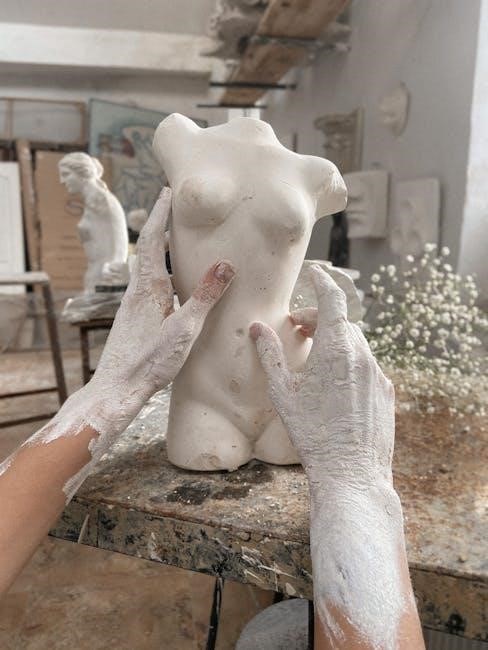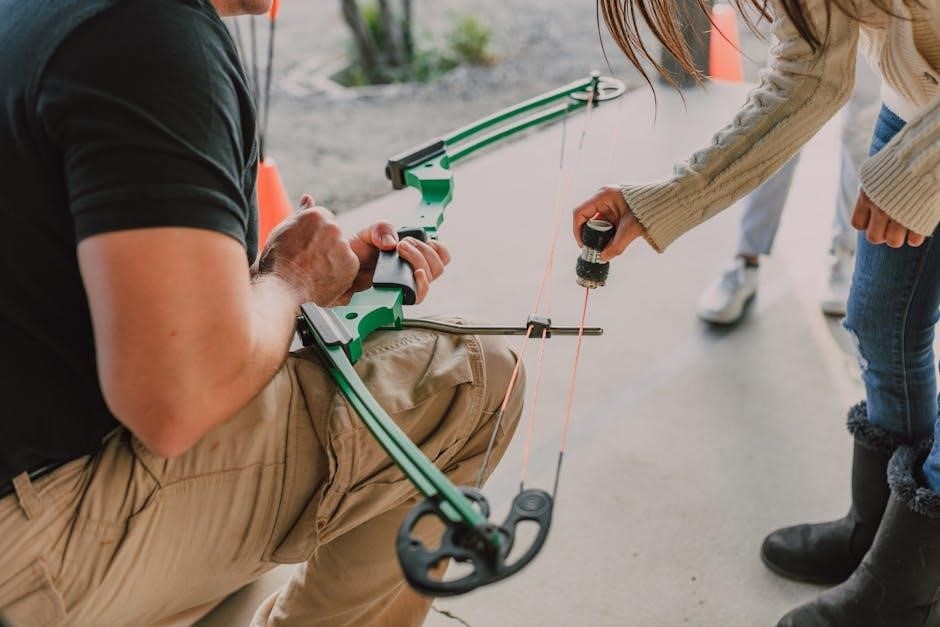Lapiplasty is a patented, minimally invasive surgical technique for correcting bunions. It involves realigning the metatarsal bone and stabilizing the joint using titanium plates for long-term correction.

What is Lapiplasty?
Lapiplasty is a patented, minimally invasive surgical technique designed to correct bunions by addressing the root cause of the deformity. It focuses on realigning the metatarsal bone and stabilizing the joint using titanium plates. Unlike traditional bunion surgeries, Lapiplasty provides three-dimensional correction, ensuring proper alignment and long-term stability. The procedure involves precise cuts and fixation to restore the natural anatomy of the foot, eliminating the bunion’s bump and addressing the unstable foundation of the joint. This approach minimizes soft tissue disruption and promotes faster recovery compared to conventional methods. Lapiplasty is considered a significant advancement in bunion correction, offering both durability and patient satisfaction.
Advantages of the Lapiplasty Technique
The Lapiplasty technique offers several advantages over traditional bunion surgeries. It provides three-dimensional correction, addressing the deformity at its core. The use of titanium plates ensures long-term stability and durability. Patients benefit from less soft tissue disruption, leading to reduced pain and faster recovery times. Additionally, the minimally invasive approach minimizes scarring and promotes quicker return to normal activities. The procedure’s precision, achieved through specialized tools like the Lapiplasty Cut Guide, ensures optimal results. Furthermore, Lapiplasty addresses the unstable joint foundation, reducing the risk of recurrence. These advantages make it a preferred choice for both surgeons and patients seeking effective and lasting bunion correction.

The Surgical Procedure
The Lapiplasty technique involves precise joint correction using specialized tools like the Lapiplasty Cut Guide. It ensures accurate cuts and alignment, followed by joint distraction and fixation with titanium plates.
Preoperative Preparation
Preoperative preparation for the Lapiplasty technique involves standard surgical readiness steps. Patients undergo medical clearance, stop certain medications, and fast as instructed. Imaging and physical exams ensure proper planning. Specific to Lapiplasty, the surgical team reviews the patient’s anatomy to optimize correction. The procedure is typically done under general anesthesia or sedation. Patients are advised to arrange postoperative care and mobility support. The use of assistive devices like crutches is often recommended post-surgery. Proper preparation ensures a smooth procedure and recovery, aligning with the goals of the Lapiplasty technique to correct bunion deformities effectively.
Joint Access and Alignment
Joint access and alignment are critical steps in the Lapiplasty procedure. The surgeon makes precise incisions to access the affected joint, ensuring minimal tissue disruption. Fluoroscopic imaging is used to guide manual reduction, allowing the surgeon to align the metatarsal bone accurately. The 3-n-1 Guide is utilized to stabilize the joint and achieve proper triplanar correction. Correct alignment is essential to restore normal anatomy and prevent recurrence of the deformity. This step ensures the joint is positioned correctly before any cuts or fixation are made, laying the foundation for a stable and long-lasting correction. Proper alignment also facilitates the use of titanium plates for fixation in subsequent steps.
Making Precise Cuts with the Lapiplasty Cut Guide
The Lapiplasty Cut Guide is a critical tool for ensuring precise cuts during the procedure. It is positioned directly on the dorsal cortex of the metatarsal bone, stabilizing it in the corrected position. This guide delivers optimal cut trajectories, virtually eliminating guesswork. Fluoroscopic imaging is used to confirm proper alignment before making the cuts. The guide ensures that the bone is cut accurately, maintaining the corrected triplanar alignment achieved during joint distraction. By securing the metatarsal in the desired position, the Lapiplasty Cut Guide facilitates consistent and reproducible results. This step is essential for achieving a stable foundation for the subsequent fixation with titanium plates, ensuring long-term correction of the bunion deformity.
Joint Distraction and Triplanar Correction
Joint distraction and triplanar correction are pivotal steps in the Lapiplasty procedure. The joint is gently distracted to access the metatarsal bone, allowing for precise realignment. Using live fluoroscopic imaging, the surgeon achieves correction across three planes: sagittal, transverse, and coronal. This triplanar approach ensures proper alignment and stability of the metatarsal bone. The distraction enables the surgeon to address the root cause of the bunion deformity, restoring the natural anatomy. Once the corrected position is confirmed, the bone is held in place, setting the stage for the next steps, such as applying the compressor and securing the cut guide. This step is crucial for achieving a stable and anatomically correct foundation for the bunion correction.
Fixation with Titanium Plates
Fixation with titanium plates is a critical step in the Lapiplasty procedure, ensuring long-term stability and proper alignment of the corrected metatarsal bone. Two low-profile, anatomically-shaped titanium plates are used to secure the bone in its new position. These plates are designed to provide stability across multiple planes, addressing the three-dimensional nature of the bunion deformity. The titanium plates are durable and biocompatible, minimizing the risk of adverse reactions. Once secured, they hold the bone firmly in place, allowing for optimal healing and preventing recurrence of the deformity. This fixation method eliminates the need for removable hardware and supports early weight-bearing, making it a key advancement in bunion correction surgery.
Wound Closure
Following the completion of the Lapiplasty procedure, the surgical site is carefully closed to promote healing and minimize scarring. The incision, typically small due to the minimally invasive nature of the technique, is sutured or stapled shut. A sterile dressing is then applied to protect the wound and reduce the risk of infection. Proper wound closure is essential for optimal recovery, ensuring the foot can bear weight shortly after surgery. Patients are provided with postoperative care instructions to maintain wound integrity and facilitate a smooth healing process.

Key Surgical Steps
- Manual reduction under fluoroscopy to align the joint.
- Using the 3-n-1 Guide for precise alignment.
- Securing the Lapiplasty Cut Guide for accurate cuts.
- Applying the Lapiplasty Compressor for joint distraction.
Manual Reduction Under Fluoroscopy
Manual reduction under fluoroscopy is a critical step in the Lapiplasty procedure. The surgeon carefully manipulates the metatarsal bone to achieve proper alignment while visualizing real-time X-ray images. This ensures accurate 3D correction of the bunion deformity. By rotating the joystick pin laterally and applying pressure to the metatarsal, the joint is stabilized in the corrected position. Fluoroscopy provides instantaneous feedback, allowing precise adjustments and confirming the restoration of the natural anatomical alignment. This step lays the foundation for successful triplanar correction and proper placement of the titanium plates, ensuring long-term stability and optimal patient outcomes.
Using the 3-n-1 Guide
The 3-n-1 Guide is a specialized instrument in the Lapiplasty procedure, designed to facilitate precise alignment and stabilization of the metatarsal bone. It is inserted into the lateral corner of the TMT joint and positioned with a stab incision over the second metatarsal. This tool ensures accurate triplanar correction by guiding the surgeon during joint preparation and alignment. The 3-n-1 Guide helps maintain the corrected position of the bone, enabling precise cuts and proper placement of the titanium plates. Its advanced design simplifies the surgical process, ensuring stability and alignment throughout the procedure. This step is crucial for achieving optimal results and minimizing complications in bunion correction.

Securing the Lapiplasty Cut Guide
Securing the Lapiplasty Cut Guide is a critical step in the procedure, ensuring precise alignment and stability during bone correction. The guide is positioned on the dorsal cortex of the metatarsal bone and held firmly in place. This step ensures that the bone remains in the corrected position, allowing for accurate cuts and proper joint preparation. The guide’s secure placement minimizes movement during the procedure, enabling the surgeon to achieve optimal cut trajectory. Once secured, the guide serves as a stable platform for completing the triplanar correction and preparing the bone for titanium plate fixation. This step is essential for achieving long-term stability and proper alignment in bunion correction.
Applying the Lapiplasty Compressor
Applying the Lapiplasty Compressor is a pivotal step in achieving proper joint distraction and triplanar correction. The compressor is used to gently distract the joint, allowing for precise realignment of the metatarsal bone. This step ensures that the bone is held in the corrected position, facilitating accurate preparation for titanium plate fixation. The compressor is applied after securing the Lapiplasty Cut Guide and making the necessary cuts. Its application enables the surgeon to maintain the corrected alignment during the procedure, which is critical for achieving long-term stability and preventing recurrence of the bunion deformity. Proper use of the compressor is essential for optimizing the surgical outcome and ensuring the success of the Lapiplasty technique.

Postoperative Care and Recovery
Postoperative care involves keeping the surgical site clean, managing pain, and using ice to reduce swelling. Patients typically wear protective footwear and attend follow-up appointments for monitoring.
Immediate Postoperative Instructions
After the Lapiplasty procedure, patients are advised to keep the surgical site clean and dry to prevent infection. Pain management is typically achieved through prescribed medications, and ice packs are recommended to reduce swelling. Patients are usually instructed to avoid weight-bearing activities for a short period and may need to use crutches or a mobility aid. A protective boot or shoe is often worn to protect the foot during the initial healing phase. Follow-up appointments are scheduled to monitor the healing process and remove any sutures. Patients should also elevate their foot to promote blood flow and minimize discomfort during recovery.
Rehabilitation and Return to Activity
Rehabilitation after Lapiplasty typically begins with non-weight-bearing activities for 2-4 weeks, followed by gradual reintroduction of weight-bearing exercises. Patients often transition to a sturdy shoe at 4-6 weeks post-op. Physical therapy may be recommended to restore strength and mobility in the foot and ankle. Most patients can return to low-impact activities within 6-8 weeks, while high-impact activities may require 3-4 months of recovery. It’s crucial to adhere to the surgeon’s guidelines to ensure proper healing and avoid complications. Full recovery and return to pre-surgery activity levels are generally achieved within 4-6 months, with many patients resuming normal activities sooner due to the procedure’s minimally invasive nature.

Outcomes and Results
Clinical studies demonstrate high success rates with Lapiplasty, showing significant improvement in bunion correction and patient satisfaction. Radiographic outcomes reveal proper alignment and long-term stability.
Clinical Studies and Success Rates
Multiple clinical studies have evaluated the effectiveness of the Lapiplasty technique. A study published in The Journal of Foot & Ankle Surgery demonstrated high success rates, with significant improvements in radiographic alignment and patient-reported outcomes. Patients exhibited proper metatarsal alignment and joint stability postoperatively. Another study highlighted the procedure’s ability to correct three-dimensional deformities, with a low rate of complications. These findings underscore Lapiplasty’s effectiveness in providing durable correction for bunion deformities, offering both structural and functional benefits. The consistent positive results across various studies contribute to its growing acceptance as a reliable surgical option for hallux valgus correction.
Patient-Reported Outcomes
Patient-reported outcomes following the Lapiplasty procedure have been overwhelmingly positive. Many patients report significant reductions in pain and improvements in functional ability. A study published in The Journal of Foot & Ankle Surgery highlighted high patient satisfaction rates, with individuals experiencing enhanced quality of life postoperatively. Patients often note the ability to return to normal activities and footwear comfortably. The minimally invasive nature of the procedure contributes to faster recovery and less discomfort compared to traditional methods. Overall, patient feedback underscores the Lapiplasty technique’s effectiveness in addressing both the physical and functional challenges associated with bunions, leading to improved mobility and reduced pain levels in daily life.

Cost and Insurance Coverage
Lapiplasty is typically covered by insurance when medically necessary. Medicare covers 80% of the approved amount, with patients paying 20% after deductible. Costs vary by location and surgeon fees.
Medicare Coverage for Lapiplasty
Medicare typically covers Lapiplasty for bunions when deemed medically necessary. The procedure is reimbursed under Part B, with Medicare paying 80% of the approved amount after the deductible. Patients are responsible for the remaining 20%; Coverage is determined based on the severity of the condition and its impact on daily life. Documentation from the surgeon is required to justify the necessity of the procedure. While Medicare covers the Lapiplasty technique, out-of-pocket costs may vary depending on individual circumstances. It’s important to consult with healthcare providers and insurance representatives to understand specific coverage details and financial responsibilities.
Understanding the Cost of the Procedure

The total cost of the Lapiplasty procedure typically ranges between $10,000 and $15,000, covering surgeon fees, facility charges, and implant costs. Prices vary by location, surgeon experience, and facility fees. While Medicare and some private insurances may cover a portion, out-of-pocket expenses depend on individual insurance plans. Additional costs may include preoperative tests, recovery materials, and physical therapy. Patients should consult their healthcare provider and insurance company to understand specific financial obligations. Discussing payment options and insurance coverage beforehand can help manage expectations and plan accordingly for this corrective procedure.
Lapiplasty offers a revolutionary approach to bunion correction, providing effective, long-term results with minimal complications. Its 3D correction and titanium fixation ensure lasting stability and patient satisfaction.
Final Thoughts on the Lapiplasty Technique

Lapiplasty represents a significant advancement in bunion correction, offering a minimally invasive, 3D approach that addresses the root cause of the deformity. By realigning the metatarsal bone and securing it with titanium plates, Lapiplasty provides lasting stability and reduces the risk of recurrence. Patients often experience faster recovery and minimal complications compared to traditional methods. Clinical studies highlight its high success rates and patient satisfaction. With Medicare coverage and a focus on precise surgical techniques, Lapiplasty has become a preferred choice for treating hallux valgus. Its innovative design and proven outcomes make it a transformative option for those seeking effective bunion correction.
